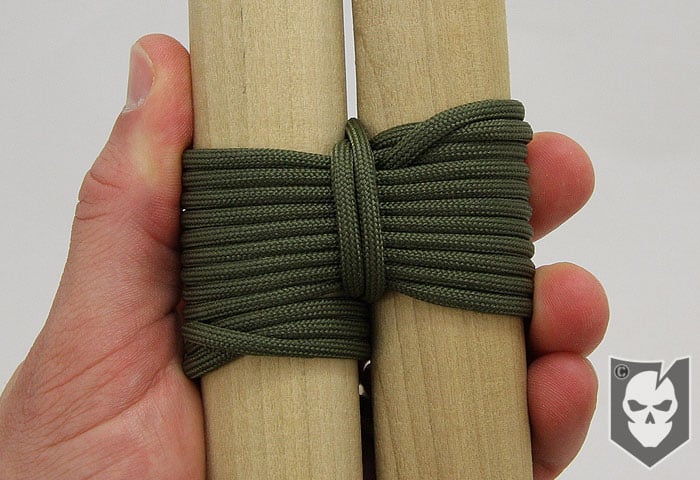
Continuing with our Lashings on the Knot of the Week, today we’ll be looking at the Round Lashing and discussing the variations and uses.
The Round Lashing is commonly used to lash up triangular A-frames of poles for rigging a block and tackle. If joining timber poles is what you’re after, like in creating a flag pole, you’ll want to exclude the frapping turns to secure the poles tightly to each other.
You’ll often see this lashing referred to as a Shear Lashing or Seizing, which we’ve gone over previously on the KOTW. We like to keep things simple and refer to this as a Round Lashing that you can use with or without the center frapping turns.
Two of these lashings can also be used for further security when joining poles. If what you’re joining will be weight-bearing, you’ll need to use a Square Lashing which is designed to hold weight. Think of the Round Lashing as what to use on the horizontal floor of the levels in a structure or the slats on a raft.
Round Lashing » Lashings
(Strength: 4/Secure: 4/Stability: 3/Difficulty: 3)
Please refer to our Knot of the Week introduction post for a description of what these ratings mean.
Uses:
- Rigging an A-Frame for block and tackle
- Creating a Flag Pole
- Making a raft
Tying Instructions:
- Start your Round Lashing with a Clove Hitch on your left-most pole.
- Starting left to right will get the working end running the right direction, as your next step will be wrapping.
- Wrap firmly, but not too tightly around both poles with the working end approximately 8 to 10 times.
- Now make 2-3 frapping turns between the two poles, (exclude this step if joining poles like in a flag pole) ending close to the opposite side of where you started your initial Clove Hitch on.
- Finish off the lashing with another Clove Hitch on this opposite side and tuck in the excess working end into the wrappings.